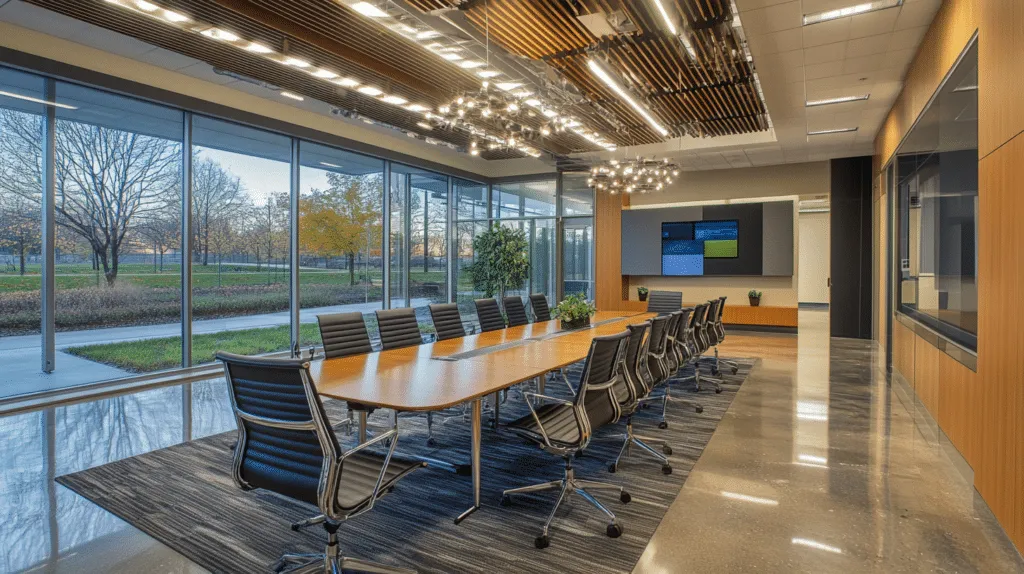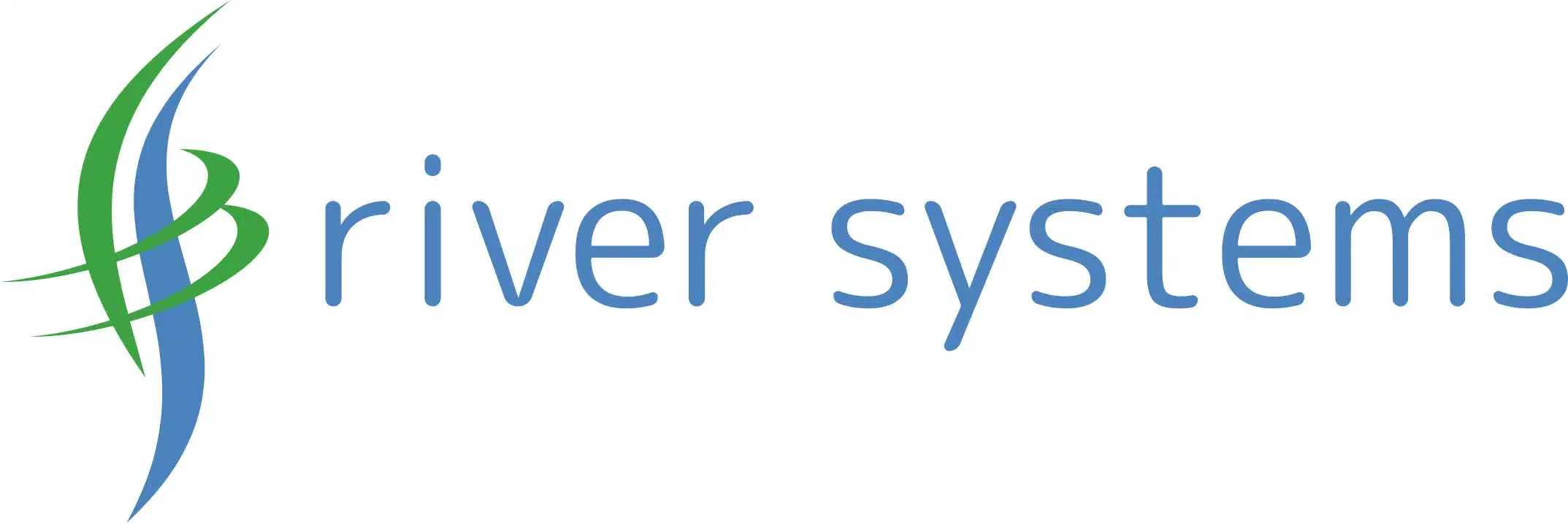Top 5 Video Conference Room Upgrades for a Modern Meeting Experience

Are you considering ways to elevate your video conference room? Whether you need sharper video quality or more interactive collaboration tools, here are five effective upgrades to take your meeting space to the next level.
Key Takeaways
- High-Definition Video & Wide-Angle Cameras
- Modern meeting rooms thrive on crystal-clear visuals that include every participant in the shot.
- Crystal-Clear Audio
- Advanced microphones and audio systems play a key role in keeping everyone engaged.
- Wireless Sharing & Interactive Displays
- Flexible, easy-to-use content sharing boosts real-time collaboration and overall productivity.
1. Upgrading Video Conferencing Systems
A strong, high-definition video setup is at the heart of any cutting-edge meeting room. After all, there’s nothing more frustrating than pixelated video or choppy audio during a critical discussion.
Wide-Angle Cameras
Wide-angle lenses ensure that everyone around the table is visible, which is crucial in bigger conference spaces. Traditional cameras might crop out people seated at the far ends, making it challenging for them to participate fully.
Popular Devices
Well-known models like the Poly G7500 or the Logitech RoomMate deliver advanced video clarity and integrate smoothly with existing systems. If your goal is simplicity, you could also opt for an all-in-one video conferencing bar—these streamlined setups handle audio and video without a mess of extra components.
Seamless Software Integration
Remember to choose hardware that syncs well with platforms like Microsoft Teams Room or Zoom Room to avoid compatibility headaches. Adding a tabletop controller makes it even easier for meeting participants to adjust volume, start calls, or share content with a simple tap.
2. Enhancing Audio Clarity with Microphone Arrays
Video might grab attention, but top-notch audio is equally critical. Collaboration suffers if people can’t hear each other, no matter how good the visuals look.
Ceiling Arrays & Other Options
Ceiling microphone arrays deliver clear, consistent audio because they pick up voices from all directions. They’re also discreet, which helps maintain a clean, professional look. Other options include tabletop mics, wall-mounted bars, and specialized ceiling units—it depends on your room’s layout and aesthetic.
Advanced Audio Systems
Brands like Yamaha offer solutions (e.g., the YVC-1000) that enhance clarity by filtering out background noise and balancing volume levels. Choosing the correct microphone setup is essential if you want your team to focus on the conversation rather than constantly asking others to repeat themselves.
3. Implementing Wireless Presentation Solutions
Meetings run smoother when slides, documents, or videos can be shared without juggling cables. Wireless presentation solutions do that, cutting the clutter and letting presenters switch on the fly.
Benefits
Quick content sharing not only saves time—but also encourages a steady flow of information. Going wireless is particularly valuable in smaller conference rooms because it keeps setups simple and tidy.
Common Devices
Tools like Google Chromecast or Apple TV are popular because they’re efficiently operated and widely supported. They let multiple people cast screens or rotate presenting duties without plugging in different cords.
Must-Have Features
Look for built-in annotation tools, digital whiteboards, or other interactive functions that let teams collaborate in real-time. If budgets are tight—or if you have remote participants—software-only solutions can also be a great fit, offering many of the same collaboration perks without new hardware investments.
4. Smart Room Control Systems for Efficiency
Intelligent control systems group various room functions—lighting, temperature, and blinds—into a single, streamlined interface. Think of it as a “mission control” for the conference room, boosting convenience and productivity in one go.
Streamlined Operations
These systems reduce downtime by automating audiovisual gear and other room elements. You won’t need to fiddle with multiple devices; you can manage everything from a single panel or app.
Programmable Lighting & Climate Control
Simple yet impactful lighting changes can switch a space from casual brainstorming to formal presentation mode. Meanwhile, automated temperature controls help keep everyone comfortable (and reduce energy bills). It’s a subtle way to create the right atmosphere without manual adjustments.
Motorized Blinds
Glare can wreck your displays, so motorized shades let you quickly dim or brighten the room. With one button tap, you can close blinds to reduce reflections or open them to let in natural light—no more fussing with manual pull cords.
5. Interactive Displays for Collaborative Meetings
An interactive display transforms a typical conference room into a dynamic hub for real-time collaboration. Whether you’re sketching out ideas or annotating slides together, these modern tools bring a hands-on element to team discussions.
Live Collaboration
Interactive displays shine when the whole team needs to brainstorm or revise documents simultaneously. Many models let users write or draw directly on the screen, with those changes visible to remote participants in seconds.
Multimedia Integration
From videos to slide decks, interactive displays easily handle multiple content types. This is especially handy if you’re dealing with diverse formats—like a marketing video, spreadsheet, and design mockups—all in the same meeting.
Wireless Connectivity
Hooking personal devices to the display wirelessly means meeting participants can toggle between screens quickly. That’s huge for hybrid meetings, where remote folks can see each new share as fast as those in the room.
Summary
Bringing your video conference room up to date doesn’t have to be complicated. By focusing on core improvements—upgraded cameras, crystal-clear audio, wireless presentation, smart room controls, and interactive displays—you can create an inviting, modern space where collaboration thrives.
Adopting some or all of these top 5 video conference room upgrades means more engaged participants, smoother discussions, and fewer time-consuming technical hiccups.
Frequently Asked Questions
What technology do you need in a conference room?
You’ll want a strong internet connection, a quality display or projector, and dependable audio-visual gear. Together, these elements support smooth communication and help everyone stay on the same page.
How do I set up a conference room for video conferencing?
Start by deciding on the best room layout for in-person and remote attendees. Then, add high-resolution screens and cameras to improve visibility. Consider flexible furniture arrangements and a dependable booking system to keep everything organized.
How do you jazz up a conference room?
Incorporate interesting light fixtures, mood lighting, or accent colors to give the space personality. Pair that with modern AV solutions and interactive tools to create a professional yet inviting room.
How do I make my conference room look professional?
Keep clutter to a minimum and ensure your furniture aligns with your brand’s style. Good lighting, integrated tech, and maybe some greenery can all contribute to a polished, welcoming environment.
What are the benefits of upgrading video conferencing systems?
By upgrading your systems, you’ll see sharper audio and visuals, better collaboration, and a more straightforward user experience. Integrating new tools with your existing meeting software also streamlines how teams connect and share ideas.
